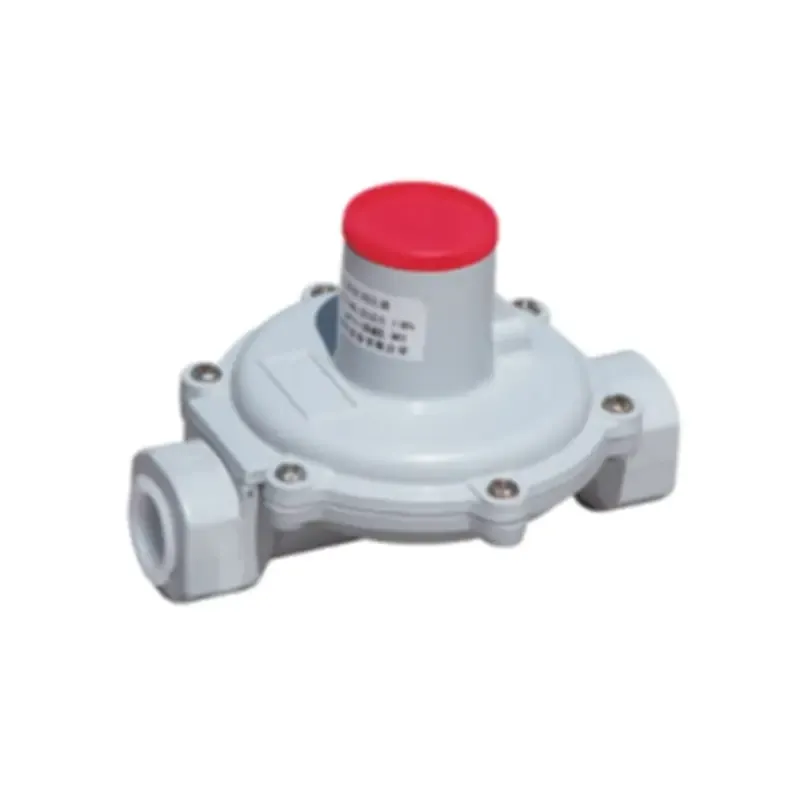
Nov . 25, 2024 13:52
Back to list
pressure reducing regulators
Understanding Pressure Reducing Regulators Essential Components for Safe Operations
Pressure reducing regulators are vital devices used in various industries to ensure safe and efficient operation of gas and fluid systems. These regulators are designed to lower the pressure of a fluid or gas from a high-pressure source to a more manageable level, making them indispensable in applications ranging from simple home installations to complex industrial processes.
How Pressure Reducing Regulators Work
At their core, pressure reducing regulators function by employing a mechanical or electronic means to reduce the pressure of a fluid or gas that comes from a higher-pressure source. The operation begins when the incoming fluid or gas enters the regulator. Inside, the regulator contains a sensing element that detects the downstream pressure. Once this pressure reaches a preset level, the regulator adjusts the flow to maintain that pressure, regardless of fluctuations in the upstream pressure.
Typically, there are two main types of pressure reducing regulators diaphragm-operated and piston-operated. Diaphragm-operated regulators are commonly used in lower-pressure applications. They utilize a flexible diaphragm that moves in response to changes in pressure, while piston-operated regulators are suited for higher-pressure applications, utilizing a piston to achieve better accuracy under varying conditions.
Key Applications
Pressure reducing regulators are widely used in various applications. In the residential sector, they regulate gas pressure for heating systems, appliances, and gas grills, ensuring safe and optimal performance. In industrial settings, they play a crucial role in equipment safety, preventing equipment damage that could result from excessive pressure.
In laboratories, precision pressure control is essential for experiment reproducibility, where regulators maintain a stable pressure environment for sensitive experiments. Moreover, in the food and beverage industry, ensuring proper gas pressure during carbonation and bottling processes is critical for maintaining product quality.
Benefits of Using Pressure Reducing Regulators
pressure reducing regulators

1. Safety One of the primary benefits of pressure reducing regulators is safety. By maintaining an appropriate pressure level, these devices prevent dangerous situations that could arise from overpressure, such as explosions or leaks.
2. Cost Efficiency By optimizing pressure, these regulators help in reducing waste and improving the efficiency of gas and fluid use, which can contribute to cost savings in operations.
3. Equipment Protection By controlling pressure levels, pressure reducing regulators extend the life of equipment and components in a system. This can minimize costly repairs and downtime, ultimately leading to increased productivity.
4. Enhanced Performance Consistent pressure control allows for better performance of systems and equipment across various applications. This leads to improved quality in production processes and products.
Maintenance and Considerations
To ensure long-lasting efficiency and safety, regular maintenance of pressure reducing regulators is essential. This includes periodic inspections for leaks, corrosion, and wear. Additionally, operators should be aware of the specific requirements and limits of the regulators, ensuring that they are installed correctly and operated within their design specifications.
Choosing the right pressure reducing regulator for a given application involves assessing factors such as the required pressure range, flow rate, and the properties of the gas or fluid involved. Utilizing high-quality components and manufacturers with a proven track record can also enhance reliability and performance.
Conclusion
Pressure reducing regulators are crucial elements in modern industrial and residential systems, playing an essential role in safety, efficiency, and performance. Understanding their function, applications, and maintenance can help in selecting the right regulator for any given application, ensuring optimal performance and longevity while safeguarding against potential hazards. As technology and regulatory standards evolve, pressure reducing regulators will continue to be vital components in the safe management of pressure across various sectors.
Next:
Latest news
-
Safety Valve Spring-Loaded Design Overpressure ProtectionNewsJul.25,2025
-
Precision Voltage Regulator AC5 Accuracy Grade PerformanceNewsJul.25,2025
-
Natural Gas Pressure Regulating Skid Industrial Pipeline ApplicationsNewsJul.25,2025
-
Natural Gas Filter Stainless Steel Mesh Element DesignNewsJul.25,2025
-
Gas Pressure Regulator Valve Direct-Acting Spring-Loaded DesignNewsJul.25,2025
-
Decompression Equipment Multi-Stage Heat Exchange System DesignNewsJul.25,2025

